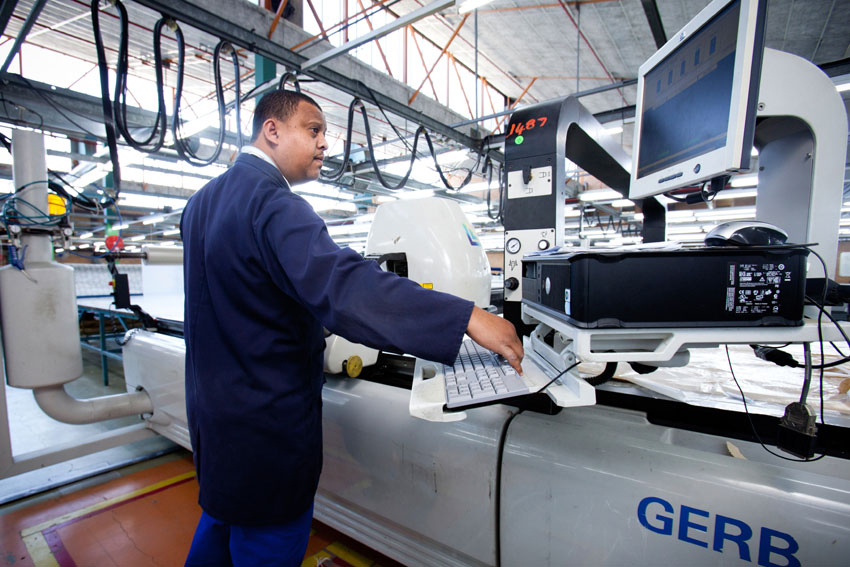Industry leaders and policy makers seek to tap global value chains

The sea change this year in global commodities markets has profound implications for Africa, a continent endowed with an abundance of natural resources and highly dependent on the export of raw materials. With many economists forecasting a difficult panorama ahead for petroleum and metals producers, they are also drawing on lessons from past commodity booms. Compared to other regions, Africa has failed to create long-lasting periods of economic progress and researchers have seen a strong correlation with market shifts. Half of the continent’s cycles of economic expansions have been linked to booming commodity prices, according to the IMF. The other half has been supported by increased competitiveness, a factor that led to more sustainable growth in the long-term. Today, Africa faces a fundamentally different global economic landscape than the one that drove it to consistent 5% growth over the past decade. More than ever, African governments and private sectors cannot depend so heavily on the vast wealth held within their territories, and must instead look to diversify their industries.
The IMF, the African Development Bank (AfDB) and other multilateral organizations have pointed to several factors that have contributed to Africa’s strong growth over the past decade but which appear now to have shifted. China may be facing a future of more sluggish growth than it has enjoyed over the past decades, which means that its appetite for Africa’s resources may also slow down. Since the 1990s, the fortunes of China’s economy and that of commodities producers in Africa have been linked. At the beginning of this period, Africa’s trade with China went from a relatively small sum to more than $200 billion annually today; a lucrative trade relationship that helped support growth in numerous African countries. As China’s economy transitions, Africa may no longer have to depend on ever-increasing demand for its resources. Also, technological developments have dramatically shifted to the global market for petroleum, putting downward pressure on prices.
Complicating matters, the dependence on mining and petroleum has in many cases failed to deliver wider benefits to the countries where production rates are largest. Highly mechanized, mining companies rely heavily on machinery that is manufactured abroad and requires a relatively small number of skilled workers. With few exceptions, Africa has not cultivated domestic petroleum producers that can rival the sector’s dominant multinational firms. Furthermore, soaring exports of oil, gas and minerals can drive up the value of local currencies, making other exports less competitive. Several mineral-rich African countries share the problematic trait of being too dependent on a relatively small number of export products. Just five product categories account for 64% of all exports in Africa, many of them commodities. This becomes especially troublesome when mineral prices suddenly plummet, as they have this year.
To break out of this boom and bust cycle, experts are urging African governments to encourage the diversity of its productive sector, with a particular emphasis on jobs-intensive manufacturing and exports. Factory activity accounted for 10% of Africa’s GDP over the past decade, compared to 25% or more in middle-income and wealthy economies. Adding a further drag on local economies, Africa imports about $240 billion-worth of manufactured goods each year – more than triple the value of its exports in this category, about $65 billion annually. “It is the responsibility of African governments to bring foreign direct investment to manufacturing to create jobs. The history of economic development is such that any country would need to start producing basic household goods. Over time they moved to higher value goods. No country in the world has developed without producing light manufacturing. And no country can skip it,” said Hinh Dinh, a World Bank economist, last year.
In Morocco, the government has taken on this challenge with a holistic approach. “Morocco has experienced a great leap forward and positions itself as a prime destination for the implantation of European and Spanish companies but also as a platform to enter the African market,” says Moulay Hafid Elalamy, Morocco’s Minister of Industry, Commerce, Investment and Digital Economy. “It has ambitious strategies for the promotion of entrepreneurship and to encourage the creation of SMEs and industrial laboratories.”
Mr Elalamy emphasizes the need for job creation and to build up a skilled and trained local workforce that can compete in the global economy. “Over the last 10 years many countries have seen a significant drop-off in the industrial framework and of industrial employment,” he says. “Morocco has done its duty because during that period it has created 75,000 jobs in industry. And in that context Morocco has provided the means, sometimes bold ones, because we said: Morocco should be an operator in new areas, and why not aeronautics and the automotive sector. Only very industrialized, highly developed countries have access to this type of activity. A few years later we find ourselves with two flourishing sectors: aeronautics with Bombardier, and supporting Bombardier there are more than 110 equipment suppliers and aircraft parts manufacturers. Hence the aeronautical sector is flourishing in Morocco. In the automotive sector we have Renault, which has been implanted here and we have over 230 equipment manufacturers, with double-digit growth annually, both in turnover and in employment. So this strategy has paid off by creating promising new jobs in Morocco.”
0 COMMENTS